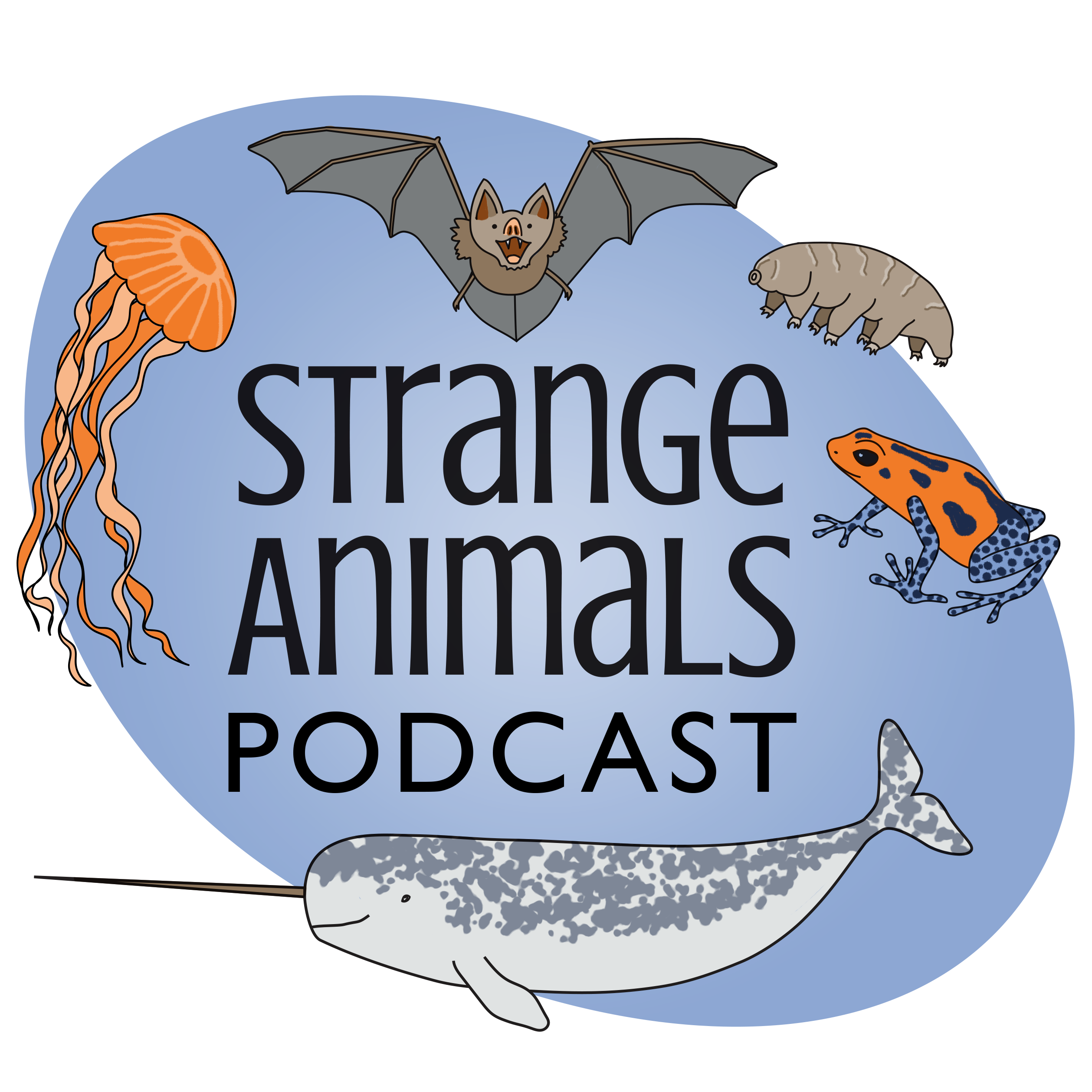Episode 376: The Horned Lizard AKA Horny Toad

Thanks to Khalil for suggesting the horny toad, also called the horned lizard or horned toad!\n\nFurther reading:\n\nThe Case of the Lost Lizard\n\nThe Texas horned lizard:\n\nTexas Horned Lizard (Phrynosoma cornutum)\n\nThe rock horned lizard [photo taken from article linked above]:\n\n\n\nShow transcript:\n\nWelcome to Strange Animals Podcast. I\u2019m your host, Kate Shaw.\n\nThis week we\u2019re going to learn about a reptile suggested by Khalil, who is Leo\u2019s friend, so a big shout-out to both. Khalil wants to learn about the horny toad, also called the horned toad or horned lizard.\n\nWe talked about it briefly back in episode 299. The horny toad is actually a lizard that lives in various parts of North America, especially western North America, from Canada down through much of the United States and into Mexico. The largest species is the Texas horned lizard, with a big female growing about 5 inches long, or almost 13 cm, not counting its tail.\n\nThe horny toad does actually resemble a toad in some ways. Its body is broad and rounded and its face has a blunt, froglike snout. Its tail is quite short. It\u2019s also kind of sluggish and spends a lot of time just sitting in the sun, relying on its mottled coloration to camouflage it. If it feels threatened, it will actually just freeze and hope the predator doesn\u2019t notice it. It\u2019s covered with little pointy scales, and if a predator does approach, it will puff up its body so that the scales stick out even more and it looks larger. It also has true horns on its head, little spikes that are formed by projections of its skull, and if a predator tries to bite it, the horny toad will jerk its head up to stab its horns into the predator\u2019s mouth.\n\nHorny toads mainly eat a type of red ant called the harvester ant. The harvester ant is venomous but the horny toad is resistant to the venom and is specialized to eat lots and lots of the ants. Its esophagus produces lots of mucus when it\u2019s eating, which collects around the ants and stops them from being able to bite before they die.\n\nBecause it eats so many venomous ants, many scientists think the horny toad stores some of the toxins in its body, especially in its blood. Its blood tastes especially bad to canids like coyotes that are common in the areas where it lives. But it does the horny toad no good to have bad-tasting blood if a predator has to bite it to find out, so the horny toad has a way to give a predator a sample of its blood in the weirdest way you can imagine.\n\nIf a horny toad is cornered by a predator and can\u2019t run away, and puffing up isn\u2019t helping deter the predator, the lizard has one last trick up its sleeve. It increases the blood pressure in its head by restricting some of the blood vessels carrying blood back to the heart, and when the blood pressure increases enough, it causes tiny blood vessels around the eyelids to rupture. It doesn\u2019t just release blood, it squirts blood up to five feet away, or 1.5 meters. As if that wasn\u2019t metal enough, the horny toad can aim this stream of blood, and it aims it right at the predator\u2019s eyes.\n\nImagine for a moment that you are a hungry coyote. You\u2019re young and don\u2019t know that horny toads taste bad, you just know you\u2019ve found this plump-looking lizard that doesn\u2019t move very fast. It keeps puffing up and looking spiky, but you\u2019re hungry so you keep charging in to try and grab it with your teeth in a way that won\u2019t hurt your tongue on those spikes. Then, suddenly, your eyes are full of lizard blood that stings and makes it hard to see, and the blood drips down into your mouth and it tastes TERRIBLE. It doesn\u2019t matter how hungry you are, this fat little lizard is definitely off the menu. Meanwhile, the horny toad is fine.\n\nScientists aren\u2019t sure if every species of horny toad can squirt blood. Some species probably can\u2019t, while some do it very seldom. It also doesn\u2019t help against some predators, like birds, who don\u2019t have a great sense of taste and aren\u2019t affected by the toxins in t...